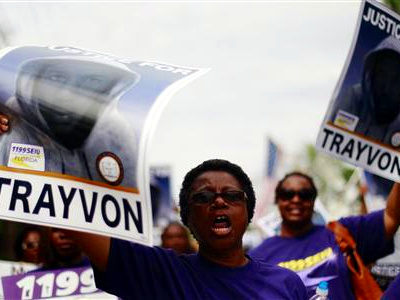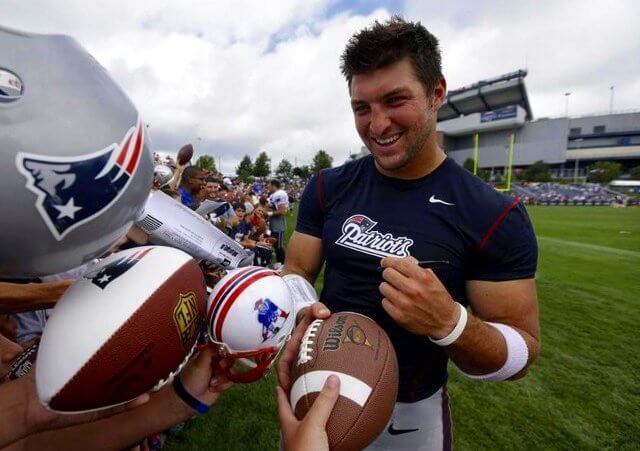
© radachynskyi /stock.adobe.com
Contents
- Critical Race Theory in simple terms
- What is Critical Race Theory?
- What is Critical Race Theory critical of?
- Examples of Critical Race Theory
- Is Critical Race Theory good or bad?
- Further reading for CRT
Critical Race Theory in simple terms
Critical Race Theory (CRT) says America still possesses racism that’s at least partially hidden, but still serious. Some level of racism lurks in how we as Americans define what is “normal” in the criminal justice system, in laws, in all levels of education, etc.
Put another way, CRT says that American institutions (i.e., government, education, media, criminal justice system), social norms (i.e., what clothes to wear, how to speak, etiquette, etc.), and many widely held beliefs (i.e., religion, patriotism, philosophies) are corrupted by obscured yet widespread racism.
CRT’s goal is equitable outcomes between races and comprehensive liberation for all minorities.
Interestingly, what this liberation should look like, and other fundamental questions, are often unanswered by CRT. As a theory, CRT primarily critiques other theories while putting forward very few positive values or beliefs. It prioritizes action and results over ideals. Kimberlé Crenshaw, a CRT legal scholar and the one who coined the term CRT, once remarked that CRT is like a verb in nature, since it is dynamic and action-oriented.
According to CRT, there is no such thing as “neutral” scholarship or “neutral” theories; scholarship always includes social influences, motivations, and biases.
Unlike most “theories,” CRT includes real-world action and public policy change as a necessary part of itself. This idea is based on CRT’s predecessor, Critical Theory. CRT consistently critiques the culture since it believes that racism adapts and is therefore nearly impossible to eradicate.
CRT is primarily a legal and social science. To eliminate racism, however, this social science of CRT must critically examine literature, education, politics, philosophy, theology, and anything else to uncover its supposed latent racism. Then CRT requires removing racism through real-world change based on those findings.
Most people, until recently, did not know about CRT because it began as a niche academic and legal study. Now, many tenets of Critical Race Theory are widely held (though they are not always known by the name of CRT).
This will become clear as we unpack CRT further.
What is Critical Race Theory?
In Critical Race Theory: An Introduction, Richard Delgado and Jean Stefancic (two prominent CRT proponents) define the main beliefs of CRT.
- “Racism is ordinary, not aberrational.” Racism is a common, lived experience of people of color in America. Within this, they argue the “system of white-over-color ascendancy serves important purposes, both psychic and material, for the dominant group.” In other words, white people as a group are privileged socially and economically over and against people of color.
- White people as a dominant group have “very little incentive to eradicate racism” since racism serves their interests.
- “Race and races are products of social thought and relations . . . they correspond to no biological or genetic reality.” Race is a human construct created by white academics and the social institutions of that time to gain power. And the construct continues to serve white people.
- CRT followers believe in “anti-essentialism and intersectionality.” This means that no person has a unitary identity, each person is part of multiple “groups” of identity, and that there is no objectively grounded human nature.
Critical Race Theory’s definition is slippery, especially if we frame it as a worldview because, by definition, CRT criticizes first and foremost. The worldview of CRT generally rejects the idea of a universal, correct, abstract worldview. To believe that one worldview correctly describes the world is, ironically, opposed to the worldview of CRT.
As Ibram X. Kendi writes in his work of CRT, How to Be an Antiracist, “When people contend that Black spaces do not represent reality, they are speaking from the White worldview of Black people in the minority. They are conceptualizing the real American world as White. To be antiracist is to recognize there is no such thing as the ‘real world,’ only real worlds, multiple worldviews” (emphasis added).
Or again, CRT proponent Dr. Robin DiAngelo writes in White Fragility: “We make sense of perceptions and experiences through our particular cultural lens. This lens is neither universal nor objective, and without it, a person could not function in any human society.” Of course, this is true on its face. We each do have a subjective way of viewing the world that is affected by culture. But, as we shall see, we ought to submit our subjective view to what is objectively true.
CRT further holds that American society as a whole—since it was created during the height of racism, white supremacy, and chattel slavery—is founded on racist principles (even if they are not explicitly racist) and therefore must be deconstructed. CRT works to deconstruct not only explicitly racist laws (that was mostly accomplished in the civil rights movement) but also what they deem as implicitly racist laws.
Since inequality of outcome between races continues to exist at substantial rates, CRT holds that the system or structure itself must be deconstructed until equity of outcomes is achieved. The claim to neutrality made by the Constitution and other laws is a facade, persistent in order to further racism and keep the powerful in power.
What is Critical Race Theory critical of?
One great threat, according to CRT, is the idea of measuring success based on “merit,” as capitalism claims to achieve. The fact that people who succeed in America do so on the principle of neutral merit is only a cover for powerful people retaining power—in this case, primarily white Americans.
For example, our Associate Editor had an excellent education in the classics, developed his writing skills from an early age, had tailored teaching to his personal needs, had ample free time to develop debate and speech skills, had connections to places through his middle class, well-connected family, and had people who supported him through college. CRT would identify his success as largely due to “white privilege” rather than merit.
CRT sees racism and power struggles in everyday situations. It is convinced that change must continue in the fields of history, sociology, politics, and literary criticism to uncover the roots of racism in society as it exists today. A complete and utter overhaul is required, with the measure of success being equitable outcomes. Its agenda is immediate: putting things off or playing the “long game” is considered ceding power to the dominant group.
The difficulty here is “where to stop.” For instance, Kendi suggests including a new amendment in the constitution that gives power to a new branch of government that monitors racial equality. Kendi also says to be an anti-racist one must also be “anti-capitalist.” Most consider themselves patriots (like Crenshaw); others hold deep animosity against America and want to rebuild from scratch.
Remember, CRT purports that knowledge isn’t neutral; what matters is action and practice. So, to understand whether an idea is good, we must consider whether my belief has subjective merit and creates practical change toward liberation and equity, and not whether it makes a claim that matches with an independent reality.
Fundamentally, according to CRT, humanity’s problem is oppression. And the source of this oppression is in the dominant group’s policies and social norms (what is “normal” and “not normal”).
CRT proponents would extrapolate this and say that this sort of thinking infects law, religion, schooling, and American culture. Indeed, any belief is tainted by prejudices like these. Remember, intentions hardly matter according to CRT. It is action or inaction that counts for everything.
In fact, this is a huge source of confusion for “outsiders” to CRT. The definition of racism is action which leads to unequal outcomes—not intentions. That means that I can be racist without ever intending or voicing racism according to CRT. This is simply a definitional difference we must be aware of.
Examples of Critical Race Theory
Let’s examine cases of Critical Race Theory in action. Not all CRT advocates will necessarily agree with all of these examples as indicative of CRT, but they show real-world examples of CRT. (In the future, we will unpack CRT’s role in education at greater length).
American history
A great deal of ink has been spilled over America’s founding in reference to CRT. The most prominent work is The 1619 Project, which claims that racism and slavery are fundamental parts of the founding of America. In the past, historians and history textbooks have played down the role of race and slavery. Traditional history in recent decades has been that slavery was a contradiction between the founding fathers’ ideals and their actions. Even the “father of CRT,” legal scholar Derrick Bell, wrote to this effect in And We Are Not Saved.
Instead of this narrative, CRT often claims that the entirety of the American experiment must become suspect due to these origins.
This shows an example of history being influenced by white supremacy and racism. If this is true, the next natural question for many CRT proponents is how much of the Constitution is implicitly racist?
Here, we are not making strong judgments about these debates of history, or the various narratives, though it seems correct that some textbooks in the past have downplayed or ignored racism, the Civil War, and slavery, which are certainly a substantial part of this country’s history.
Diversity and inclusion training
Companies everywhere have begun mandatory inclusion and diversity training. This is a divisive issue. For instance, some social scientists argue that these programs usually do the opposite of their intended purpose. The mandatory programs normally make racial tensions worse. Nonetheless, the importance for these companies to be seen doing something boils over from CRT. And some CRT advocates, like White Fragility’s Dr. Robin DiAngelo, teach diversity training as part of their profession.
Whether it is effective or not, the “Diversity Equity Inclusion” business sector equals about $8 billion.
American law
Many have argued that Reagan’s “war on drugs,” which at some level persists in American law today, was implicitly racially motivated to keep black people in poverty. The way the laws were constructed, according to CRT, targeted African Americans and people of color.
For example, some argue that targeting cocaine (a drug that black people tended to abuse) as opposed to heroin (which white people tended to abuse) was implicitly racist. Defenders of Reagan will say it is because of cocaine’s particularly destructive nature that it was targeted.
Or, take another example, the “broken windows theory” of policing, which says if you target minor crimes (like breaking windows), the environment will be better and people will be less encouraged to commit crimes. This has sometimes been cited as giving excuses to police to target people of color.
While The New Jim Crow by Michelle Alexander makes these arguments based on statistics and evidence, many people of color consider this obvious based on their lived experience. This is one of many strains of racist bias that keeps people of color in a cycle of poverty.
The criminal justice system and policing
Again, in The New Jim Crow, Alexander argues that while it is the job of the police to bring criminals to justice, the widespread practice of heavily policing impoverished, inner-city areas comprising mostly people of color selectively ignores the crimes that take place in white-majority suburbs and “white collar” crimes. This discrepancy supposedly shows that while most would say justice is “blind” in America, this is an example of how the criminal justice system cannot be neutral, though it claims to be. And, according to CRT, this discrepancy has a neutral “cover” but is an example of systemic racism.
More prominently, the Black Lives Matter movement drew attention to Goerge Floyd’s murder by Derrick Chauvin, a white police officer. Marches, protests, and some riots across the nation called for awareness and systemic change in policing practices. This included some demanding that police be “defunded” and to replace them with social workers and financial investment into the communities. Again, in this article, we are not committing to judgments of these policies but trying to present CRT’s effects and its arguments.
What’s “normal” and “whiteness”
Until recently, Crayola identified peach color in their markers and crayons as “skin-color.” CRT would say that this is an example of the majority (whites) using their own standards as what is “normal.” Whites think of themselves not as “white” but simply as “normal.”
An important part of CRT is their deconstructing “whiteness,” whose self-understanding only happened relatively recently. NPR released a podcast called “Seeing White.” The idea of “whiteness” separates “whites” from “everyone else.” And this implicit belief nestled in what is “normal” gives an easy road to white supremacy.
Is Critical Race Theory good or bad?
The main conclusion we must come to about CRT is that, like most theories, it is a mixed bag.
There are good ideas, and there are bad ones as well—especially as regards public policy.
CRT correctly points out worrying discrepancies between people of color and white people, but how to tackle these problems in a beneficial way is complex. We will see that some of the founding principles of CRT in Critical Theory are diametrically opposed to the Bible, and we’ll later look at whether CRT is biblical.
For now, we hope this provides a solid, fresh start to understanding CRT. We’ve heard it so frequently in the news, and the issue has become deeply politicized, that it’s becoming impossible to hear a clear definition. Hopefully, this provides a balanced understanding of CRT.
For more discussion on this issue, read part 2: “Is Critical Race Theory Marxist?”
Works consulted and further reading
Does Silence Equal Complicity With Racism? – Jerry Wagner
What Does the Bible Say About Racism? – Jim Denison
How to be an Antiracist – Ibram X. Kendi
Critical Race Theory – Richard Delgado and Jean Stefancic
Critical Race Theory: the Key Writings that Formed the Movement – Edited by Kimberlé Crenshaw, Gotanda, Peller, Thomas.
Seeing White (podcast) – Scene on Radio
The Color of Compromise – Jemar Tisby
White Fragility – Robin DiAngelo
The New Jim Crow – Michelle Alexander
And we Are Not Saved – Derrick Bell
Traditional and Critical Theories – Max Horkheimer
Why Social Justice is not Biblical Justice – Scott David Allen
Cynical Theories – Helen Pluckrose and James Lindsay
Critical Race Theory: Plundering the Egyptians or Worshiping Ba’al? – Bruce Ashford
Critical Race Theory: What Christians Need to Know – Sitara Roden
Faultines – Voddie Baucham
The 1619 Project: A Critique – Edited by Philip W. Magness.
Reparations: A Christian Call for Repentance and Repair – Duke L. Kwon , Gregory Thompson
Confronting Injustice Without Compromising Truth – Thaddeus Williams
Engaging Critical Theory and the Social Justice Movement – Neil Shenvi and Pat Sawyer
Cambridge Companion to Critical Theory – Edited Fred Leland Rush
The Frankfurt School and Critical Theory – Internet Encyclopedia of Philosophy
Critical Theory – Stanford Encyclopedia of Philosophy
Mapping the Margins: Intersectionality, Identity Politics, and Violence against Women of Color– Kimberlé Crenshaw.
Critical Race Theory, the New Intolerance, and Its Grip on America – Jonathan Butcher and Mike Gonzalez.
The Critical Legal Studies Movement – Harvard Law Review, Roberto Mangabeira Unger
Critical Legal Theory – Cornell Law School
Philosophical Methodologies of Critical Race Theory– Lewis Gordon
Toward a Critical Race Psychology – Salter, Phia; Adams, Glenn
To Tackle Critical Theory in K-12 Classroom, Start with Colleges of Education – Lindsey M. Burke, Mike Gonzalez.
Critical Race Theory, Race Equity, and Public Health: Toward Antiracism Praxis – Chandra L. Ford, Collins O. Airhihenbuwa.
The fear of multiple truths: On teaching about racism in a predominantly white school – Antony Farag
President Trump Has Attacked Critical Race Theory. Here’s What to Know About the Intellectual Movement – Cady Lang













